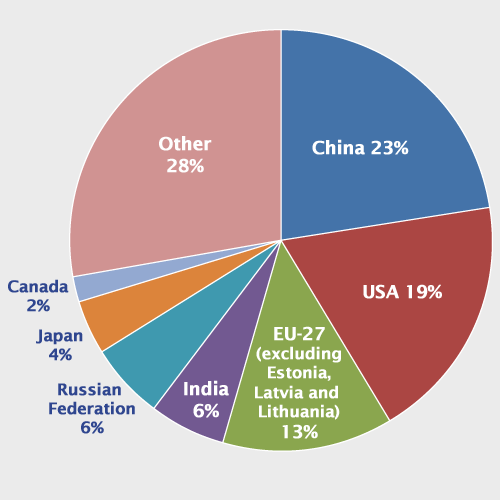Ralph Keeling wrote a blog post called NOTE ON REACHING THE ANNUAL LOW POINT. In it he wrote.
We are now approaching the annual low point in the Mauna Loa CO2 curve, which typically happens around the last week of September but varies slightly from year to year. Recent daily and weekly values have remained above 400 parts per million. From this it’s already clear that the monthly value for September will be above 400 ppm, probably around 401 ppm. September is typically but not always the lowest month of the year.
Later he notes:
Concentrations will probably hover around 401 ppm over the next month as we sit near the annual low point. Brief excursions towards lower values are still possible but it already seems safe to conclude that we won’t be seeing a monthly value below 400 ppm this year – or ever again for the indefinite future.

According to an article in Science, 1) 15 million years ago, was the last time the world was three to six degrees warmer, and sea levels were between 75 and 120 feet higher.
Even more important the number 400 and the date of September 2016, was the article Robert Monroe published in May 23rd 2016. The article titled WHY HAS A DROP IN GLOBAL CO2 EMISSIONS NOT CAUSED CO2 LEVELS IN THE ATMOSPHERE TO STABILIZE?
The article is important since it points out that
There’s a pretty simple reason why the recent stabilization in global emissions hasn’t caused CO2 levels to stabilize. The ocean and land sinks for CO2 currently offset only about 50 percent of the emissions. So the equivalent of 50 percent of the emissions is still accumulating in the atmosphere, even with stable emissions. To stabilize CO2 levels would require roughly an immediate roughly 50 percent cut in emissions, at which point the remaining emissions would be fully offset by the sinks, at least for a while.
The bottom line, the only way to reduce the increase in CO2 pts per million to a sustainable level is for a more than 50% reduction in emissions. So if we were to be really ambitious and have the level stabailize and maybe even go down. According to the www.co2.earth
Fossil fuel emissions (including cement production) accounted for about 91% of total CO2 emissions from human sources in 2014. This portion of emissions originates from coal (42%), oil (33%), gas (19%), cement (6%) and gas flaring (1%).
To get to the 50% reduction or more it means cutting almost all of the coal and oil usages. That means, based on the EPA report below it will impact Electricity, Transportation, which in turn will impact the other three sectors agriculture, commercial and industrial.

Unfortunately no one is going to agree to eliminate electricity and transportation. Even worse is trying to create a solution where the China, USA and the EU-27 and Other can equitably reduce expenditures in the near and immediate term without causing a global collapse. 
The only solution is to rapidly deploy and implement non CO2 emitting energy sources which can maintain an energy output at our current levels or beyond. That should be our national and global focus. Using technology and innovation to get ahead of the problem.
- Coupling of CO2 and Ice Sheet Stability Over Major Climate Transitions of the Last 20 Million Years
Aradhna K. Tripati1,2,*, Christopher D. Roberts2, Robert A. Eagle3
About me: Sean McClure is a former Senior Advisor at the White House. Sean is currently the Suspension and Debarment Advisor to the Department of the Treasury and with over 15 years of experience working at the White House, Department of the Treasury, USAID, and Department of State. He has traveled extensively to 35 countries in Africa, Asia, Latin America and Europe.


